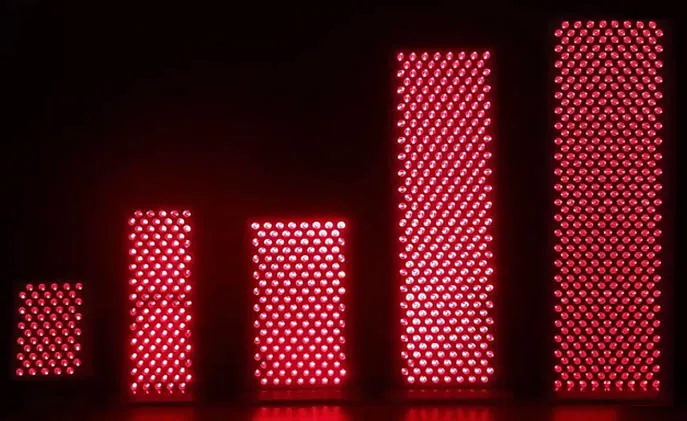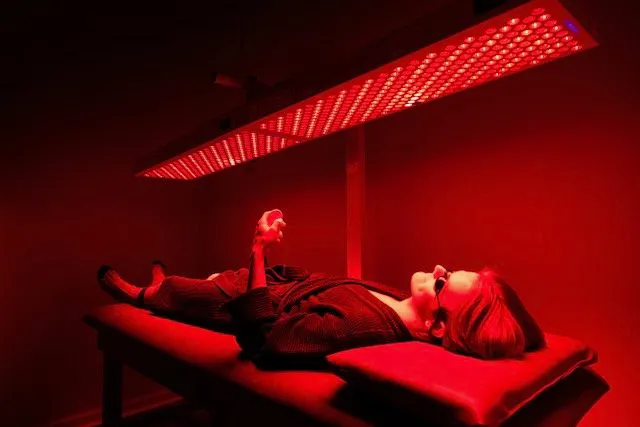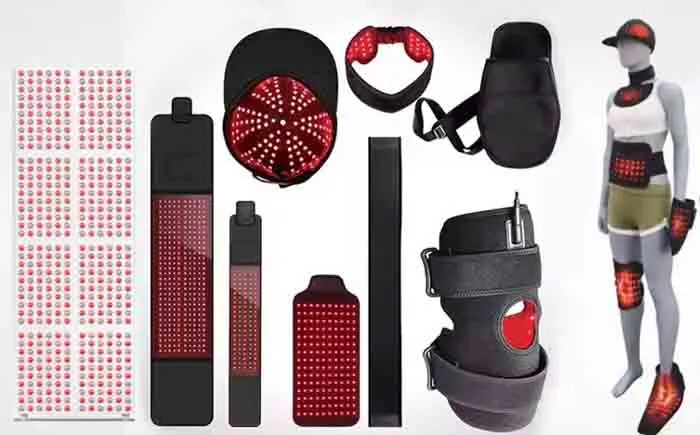Introductions
Red light therapy (RLT) has surged in popularity as a non-invasive treatment option that harnesses the power of low-level red and near-infrared light to promote healing and rejuvenation. From skincare enthusiasts seeking anti-aging solutions to athletes looking for enhanced recovery, RLT is gaining traction across various demographics, thanks to its potential benefits.
The U.S. Food and Drug Administration (FDA) plays a crucial role in overseeing the safety and efficacy of devices across numerous industries. However, it’s important to clarify that red light therapy devices are often marketed as wellness devices rather than medical equipment. This distinction means that while RLT devices can be beneficial for various applications, they do not require the same rigorous FDA approval process as medical devices.
Are Red Light Therapy Devices FDA Approved?
When looking for FDA approved red light therapy devices, you may need to know the clear distinction between the terms “FDA-cleared” and “FDA-approved.”
-
FDA-Cleared vs. FDA-Approved:
FDA-cleared devices are those that have been evaluated by the FDA and found to be substantially equivalent to existing devices that are legally marketed. This process allows manufacturers to demonstrate that their product is safe and effective based on existing standards. In contrast, FDA approved led light therapy devices undergo a more rigorous review process, assessing the device’s safety and effectiveness through clinical trials.
Red Light Therapy Device not a Medical Equipment:
Red light therapy devices, especially those designed for home use, fall under the “general wellness” category. This classification allows these devices to be marketed without the extensive requirements that come with FDA approval. As a result, manufacturers can promote these products for their wellness benefits without needing to prove their medical efficacy. FDA cleared red light therapy devices is enough for clinical purpose.
Consumer-Grade vs. Medical-Grade Devices:
For non-medical, consumer-grade red light therapy devices, FDA approval is not a requirement. However, some medical-grade devices may receive FDA clearance for specific therapeutic purposes, such as treating certain skin conditions or promoting wound healing. It’s crucial for consumers to understand this distinction when considering their options in the red light therapy market.

What Does FDA-Cleared Mean for Red Light Therapy?
“FDA-cleared” status provides an additional layer of assurance for specific red light therapy devices targeting particular conditions. However, many non-cleared devices remain safe and effective for general wellness, emphasizing the importance of sourcing from trustworthy brands.
Understanding “FDA-Cleared”:
When a red light therapy device is described as “FDA-cleared,” it signifies that the device has undergone a review process by the FDA to determine that it is substantially equivalent to a previously marketed device. This process assesses whether the device meets specific safety and effectiveness criteria, allowing it to be legally marketed for its intended use without undergoing the more intensive approval process reserved for new medical devices.
Examples of FDA-Cleared RLT Devices:
Certain red light therapy devices may receive FDA clearance for treating specific conditions, such as pain relief or promoting wound healing. For instance, devices designed for managing chronic pain or alleviating muscle soreness may have FDA clearance due to their substantial equivalence to existing treatments. These FDA-cleared devices can provide users with confidence in their efficacy and safety for those particular uses.
-
Safety Assurance for Non-Cleared Devices:
It’s important to note that while some red light therapy devices may not have FDA clearance, many of these non-cleared devices are still safe for general wellness applications, especially if sourced from reputable manufacturers.
Benefits of Red Light Therapy Devices
Red light therapy devices offer a wide array of benefits, from enhancing skin health and easing pain to improving muscle recovery and supporting better sleep. These advantages make RLT an appealing option for wellness and therapeutic treatments.
Enhanced Healing and Pain Relief:
One of the most well-established benefits of red light therapy (RLT) is its ability to reduce inflammation and support the body’s natural healing processes. Scientific studies have shown that RLT can accelerate tissue repair and promote recovery from injuries, making it a popular treatment for athletes and individuals dealing with chronic pain. Its non-invasive nature allows it to be used on sore joints, tendons, and muscles, offering relief from conditions like arthritis, muscle strains, and tendonitis.
Skin Health and Anti-Aging:
Red light therapy is widely recognized for its skin-enhancing properties. FDA-compliant devices, when used consistently, stimulate collagen production, which plays a key role in reducing the appearance of wrinkles, fine lines, and other signs of aging. Additionally, RLT can help improve skin tone, texture, and elasticity, making it a favored treatment for those seeking non-invasive anti-aging solutions. It has also been used to aid in the reduction of acne, scars, and other blemishes.
Muscle and Joint Support:
Beyond skin and healing benefits, red light therapy offers significant support for muscles and joints. It helps to relax muscles, reduce stiffness, and speed up post-workout recovery, making it popular among athletes and fitness enthusiasts. For individuals suffering from joint-related conditions like arthritis or joint pain, RLT can provide relief by improving blood circulation, reducing inflammation, and enhancing joint mobility over time.
Mood and Sleep Improvements:
Emerging research suggests that red light therapy may positively influence mood and sleep patterns. By promoting cellular repair and energy production, RLT can help regulate the body’s circadian rhythms, leading to better sleep quality. Additionally, some studies indicate that it may help reduce symptoms of anxiety, depression, and stress, providing a holistic approach to mental well-being.

Choosing the Right Red Light Therapy Device
What to Look for When Purchasing an RLT Device:
- When selecting a red light therapy device, there are several key factors to consider to ensure you get the most effective results. The most important is power output, which determines the intensity and penetration of the light. Look for devices with adequate power, and radiance in mW/cm², to ensure it can deliver therapeutic benefits.
- Additionally, focus on the wavelengths offered by the device. Red light at 660nm and near-infrared light at 850nm are the most commonly used and effective wavelengths. The 660nm wavelength targets skin-deep issues like collagen production, anti-aging, and skin tone improvements, while 850nm penetrates deeper into tissues, supporting muscle recovery, joint pain relief, and enhanced circulation. Devices that combine both wavelengths can offer comprehensive benefits.
- Quality assurance is also vital. Look for devices that have undergone third-party testing, adhere to safety standards, and are certified by regulatory bodies such as the FDA, FCC, CE etc. This ensures that the device you choose is both safe and effective for home or professional use.
Importance of Buying from Established Suppliers:
To ensure both the safety and effectiveness of the red light therapy device you purchase, it’s critical to buy from reputable suppliers who follow high manufacturing standards and comply with industry regulations. Established brands are more likely to offer warranties, customer support, and detailed usage guidelines. They should provide clear information about the power output, wavelengths, and materials used, so you know you’re getting a high-quality product. Furthermore, look for reviews, certifications, and a proven track record to avoid unreliable or low-quality products on the market.
Available Red Light Therapy Device Range
To suit a wide variety of wellness goals and user needs, red light therapy devices are available in various categories. Here’s an overview of the primary types and their specific uses:
1. Full-Body Therapy Devices:
Full-body red light therapy devices are ideal for individuals looking for comprehensive treatment that covers a large surface area at once. These devices, such as full-body panels or mats, are commonly used to promote systemic wellness, reduce inflammation, and support muscle recovery. They’re popular in both home and clinic settings, offering a broad, immersive experience.
2. Portable, Handheld Devices:
Handheld red light therapy devices are compact and easy to use, making them great for targeting specific areas, like joints, facial areas, or minor injuries. Their portability makes them convenient for on-the-go use, allowing individuals to treat localized areas without needing a full setup.
3. Targeted Therapy Products:
Designed to address specific wellness needs, these products focus on particular body parts:
- Hats/Caps: Specialized for scalp and hair health, these caps emit red light designed to stimulate hair follicles, promoting growth and improving scalp condition.
- Pads and Wraps: Flexible and versatile, these can be used on joints, arms, legs, or back, providing relief for muscle aches, tension, and inflammation in targeted areas.
- Nasal Devices: Used for sinus health and respiratory support, these small devices direct light through the nasal cavity to target issues associated with sinus health.
4. Home Use vs. Clinic-Grade Equipment:
- Home-Use Devices: Designed for convenience, these devices typically have a user-friendly design and are effective for general wellness without requiring medical supervision. They offer safe, lower-intensity treatments suitable for consistent use.
- Clinic-Grade Equipment: These devices are more powerful and often come with advanced settings for targeted therapy. Clinic-grade devices are used under professional supervision for specialized treatments in clinical.

Supplier Information: Where to Buy Reliable Red Light Therapy Devices
- Finding High-Quality RLT Device Suppliers:
When searching for a reliable supplier of red light therapy devices, prioritize suppliers who have a strong reputation for quality and customer satisfaction. Look for suppliers who are transparent about their manufacturing standards, device specifications, and testing certifications. Established suppliers often showcase independent reviews and third-party certifications that help validate their device effectiveness and safety. Also, check if they specialize in red light therapy or other wellness products, as this often indicates a deeper commitment to quality and expertise in the field.
- Key Factors to Consider:
Before committing to a purchase, assess the supplier’s customer support, warranties, and available product ranges. Responsive customer support is essential for addressing questions about device usage, troubleshooting, or warranty claims. Most high-quality suppliers offer warranties on their devices, which is a reliable indicator of product durability and the brand’s confidence in its products. A diverse product range also enables you to choose the most suitable device for your needs, whether it’s for targeted therapy or full-body applications.
-
Examples of Available Product Types:
Reputable suppliers typically offer a range of red light therapy devices to suit various treatment needs. Here are some common types:
Handheld Devices: Compact and portable, handheld devices are perfect for targeting specific areas like the face, hands, or small joints.
Full-Body Devices:For those seeking comprehensive treatment, full-body red light therapy devices provide broad exposure, ideal for muscle recovery, full-body rejuvenation, and systemic health benefits.
Targeted Therapy Caps or Hats: Specifically designed for the scalp and hair, these caps are popular for those interested in hair growth and scalp health.
Choosing a supplier with a wide product range, excellent customer support, and a commitment to quality ensures a smooth experience and effective red light therapy results.
Like Joovv, Hooga, Mito, PlatinumLED red light therapy devices suppliers are all good supplier. But they are brand not manufacturer, so you may find the price is very high and stop for that. As a direct manufacturer, we provide top-quality red light therapy devices at factory prices, giving you brand-level performance without the markup.
Safety Considerations for Red Light Therapy
When used properly, red light therapy (RLT) is a safe and non-invasive wellness treatment with minimal side effects. However, understanding basic safety considerations can help ensure the best experience:
- Safety of Using Red Light Therapy at Home:
Home-use RLT devices are generally designed with safety in mind, offering controlled light exposure to minimize risks. Most users experience little to no side effects, though those with highly sensitive skin may experience slight irritation or redness after treatment, which typically resolves on its own. Importantly, red light therapy does not involve UV rays, so it does not carry the risks of sun exposure or tanning beds. - Guidelines for Proper Usage and Precautions:
- Avoid Direct Eye Exposure:While red light therapy is safe, it’s best to avoid staring directly into the device’s light to prevent any potential eye discomfort. Some devices provide protective eyewear for added safety.
- Not Recommended for Open Wounds:Avoid using RLT directly on open cuts, fresh scars, or healing wounds unless advised by a healthcare professional. This allows the natural healing process to proceed without additional stimulation.
- Start with Recommended Duration and Frequency: Most devices come with usage guidelines—typically 10–20 minutes per session, a few times per week. Following these recommendations helps prevent any unnecessary skin stress from overuse.
- Consult for Medical Conditions:Individuals with certain medical conditions, such as epilepsy or photosensitivity disorders, should consult a healthcare provider before beginning RLT.
Conclusion
Red light therapy offers a safe and effective wellness solution for a range of purposes, from skin health and anti-aging to muscle recovery and mood enhancement. When used according to guidelines and with a quality device, RLT is generally free from serious side effects, making it an appealing option for at-home or clinical use. Although these devices may not require FDA approval for general wellness applications, choosing reputable, high-quality products ensures both safety and effectiveness.
Whether for targeted treatments or full-body wellness, red light therapy can be a valuable addition to your routine, providing scientifically backed benefits with minimal risk. By following recommended practices and selecting devices from trusted suppliers, users can confidently enjoy the advantages of red light therapy as part of a holistic wellness approach.
FAQs
Results vary, but many users report noticeable benefits within a few weeks with consistent use. Skin improvements and pain relief might appear sooner, while benefits for mood and sleep may take longer.
Yes, red light therapy is generally safe for daily use, especially with home devices designed for general wellness. However, it’s best to follow the manufacturer’s recommended guidelines for optimal results and safety.
Yes, red light therapy is popular for skin health, helping to reduce wrinkles, improve skin tone, and potentially reduce acne. Some devices are specifically designed for these purposes.
Home-use devices are generally smaller, lower-powered, and designed for easy use, while clinical-grade devices are larger, more powerful, and often used under professional guidance.
While red light is generally safe, some users prefer to wear protective goggles to avoid prolonged exposure to intense light, especially for sessions near the face.
Wavelengths around 660nm (red light) and 850nm (near-infrared) are most commonly used, as they penetrate the skin to stimulate cell regeneration and healing.
Yes, red light therapy is suitable for all skin types, but individuals with very sensitive skin should monitor for any signs of irritation.
FDA approved red light therapy devices can be used for various conditions, including knee pain, but it’s essential to distinguish between devices that are specifically cleared by the FDA for pain relief and those that are not.
Yes, FDA-approved light therapy devices can be beneficial for dry eyes, particularly those that use specific wavelengths of light. Near-infrared light (around 850 nm) is generally considered more effective than red light (around 660 nm).
Wavelength Considerations
Near-Infrared Light (850 nm)
- Deeper Penetration: Near-infrared light penetrates deeper into tissues, which can help address underlying inflammation and improve blood circulation in the eye area.
- Inflammation Reduction: This wavelength is particularly beneficial for reducing inflammation, which is a common issue in dry eye syndrome.
Red Light (660 nm)
- Surface Effects: While red light can still provide benefits, its effects are more superficial compared to near-infrared light.
- Collagen Production: Red light is known for promoting collagen production, which can improve skin health but may not directly address the underlying issues related
However, individual responses can vary, and it’s crucial to consult with an eye care professional to determine the most suitable treatment approach for your specific needs.
FDA approved red light therapy devices for the face are designed to offer various skin benefits, primarily through the use of red and near-infrared wavelengths. Here’s what you need to know:
Benefits of FDA Approved Red Light Therapy Devices for the Face
-
Skin Rejuvenation
- Collagen Production: Red light therapy stimulates collagen synthesis, helping to reduce fine lines and wrinkles, making the skin appear firmer and more youthful.
- Improved Texture: Regular use can enhance overall skin texture, leading to a smoother appearance.
-
Acne Treatment
- Anti-Inflammatory Effects: Red light can reduce inflammation and bacterial growth, making it beneficial for acne-prone skin.
- Healing of Acne Scars: The therapy can aid in the healing of acne scars and reduce redness.
-
Hyperpigmentation Reduction
- Even Skin Tone: Red light therapy can help in reducing hyperpigmentation and promoting a more even skin tone over time.
-
Improved Circulation
- Enhanced Blood Flow: Increased circulation from red light therapy can lead to a healthier, more vibrant complexion.
